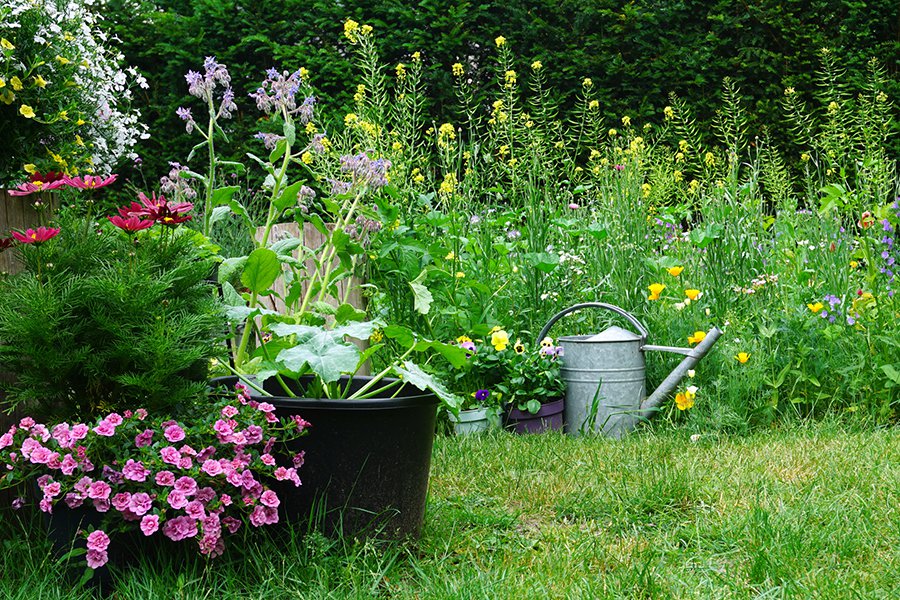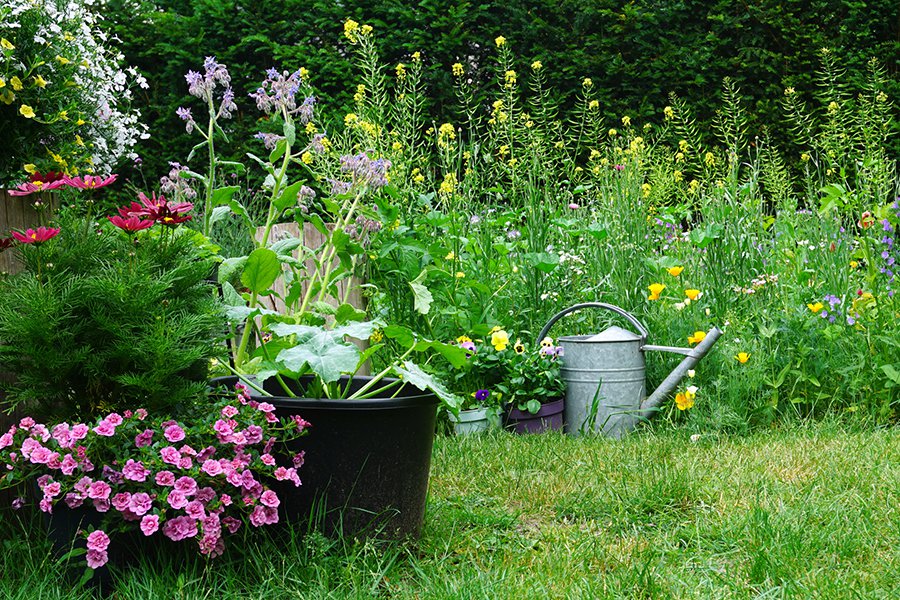
There are 40 million acres of garden rising in the USA right now. That’s about six species of crops protecting an space the dimensions of Wisconsin.
America’s lawns have been rising in recognition because the 1700s. This quest to encompass ourselves with easy, inexperienced surfaces has come at important price each to householders and the surroundings. We spent virtually $100 billion mowing, weeding, seeding and feeding our lawns in 2023, and that quantity is insignificant in comparison with the associated fee to the surroundings. Cultivating massive numbers of a single plant species in the identical area, yr after yr, has contributed to a harmful decline in biodiversity (outlined because the number of organisms in an ecosystem and necessary for sustaining life). In impact, we’re rising ecological useless zones.
Anna Galusha Aquino, who lives in Richmond and practices panorama structure throughout the state, urges us to place away our mowers, pesticides and fertilizers and take up extra earth-friendly practices that may construct biodiversity again into the residential panorama.
As a primary step, Aquino suggests changing sections of turfgrass into small groves of native timber, particularly oaks, which host an astounding 500 species of moths and butterflies. She urges householders to “depart the leaves the place they fall,” the place they’ll provide protected harbor to the tiny pupae that drop from the foliage above. Throughout the hottest, driest months of the yr, when progress slows, mow the remaining turfgrass much less usually and take into account switching to an electrical mower, weed eater and leaf blower.
Aquino additionally likes to exchange a garden with what she calls “ground-hugging” crops — low-lying species that develop extra horizontally than upright. She’s particularly enthusiastic about somewhat powerhouse referred to as phlox subulata. It’s a deer-resistant native evergreen that grows in a grass-like mat, takes full or half solar, flowers in spring, serves as a larval host plant for seven species of moths and butterflies, and tolerates some foot site visitors. “It gives much-needed early season nectar and pollen and finally grows so dense that weeds can’t get buy,” she provides. It needs solely well-draining soil in return.
For a extra holistic method, Aquino suggests “changing a high-input, manicured monoculture garden” right into a mixed-species garden, which she fondly refers to as a “nation garden.”
“Keep away from letting anybody factor develop into too influential,” she says. Encourage clover and native violets, dandelions, blended grasses and sedges — native colonizers whose fibrous root methods anchor soil, stop erosion, filter pollution and assist replenish the water desk, all whereas supporting native wildlife. They’ve little to no want for water or fertilizer. In case you have a mixed-species garden, have a good time “No Mow April” by letting crops flower and even set seed. They may nourish early rising pollinators at a time of yr when there are fewer nectar-producing crops accessible.
Aquino recommends “matrix plantings” for householders who need an much more pure look. Designed plantings that mimic meadows within the wild, matrix plantings have been made fashionable by Piet Oudolf, who helped design New York Metropolis’s Excessive Line. Make investments a while in planning a matrix planting. The payoff is a strong ecosystem that gives an interesting interaction of heights, textures, colours and bloom instances.
Matrix plantings are organized in grids and inbuilt layers from the bottom up. A free framework of grasses and sedges takes up 40% to 60% of the area and unites the panorama right into a visually interesting, weed-resistant and resilient complete. Infill with clumps or drifts of low-growing crops, interspersed with structural specimens resembling Culver’s root and blue vervain. The result’s a multidimensional blended planting the place there may be at all times one thing in flower. The nonprofit Xerces Society for Invertebrate Conservation recommends rising no less than three completely different species that may flower in every of the three blooming seasons to make sure a steady meals provide for native wildlife. There are lists of pollinator-friendly native crops organized by area on the Xerces Society web site.
Even in our personal backyards, nature is aware of finest. Put the correct native crops in the correct place — crops which might be acclimated to the rainfall, solar and soil situations in your location — and they’ll work collectively within the complicated relationships which have developed over thousands and thousands of years. The result’s a sustainable ecosystem that requires much less water, no fertilizer and no pesticides. After we backyard like nature does, the crops do the work.

